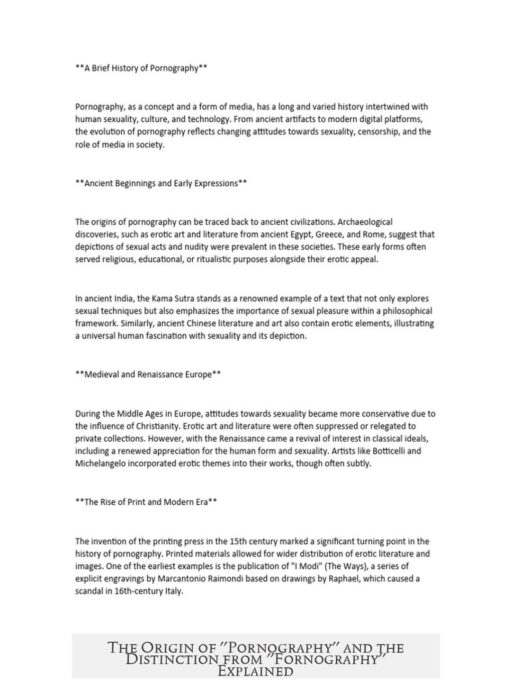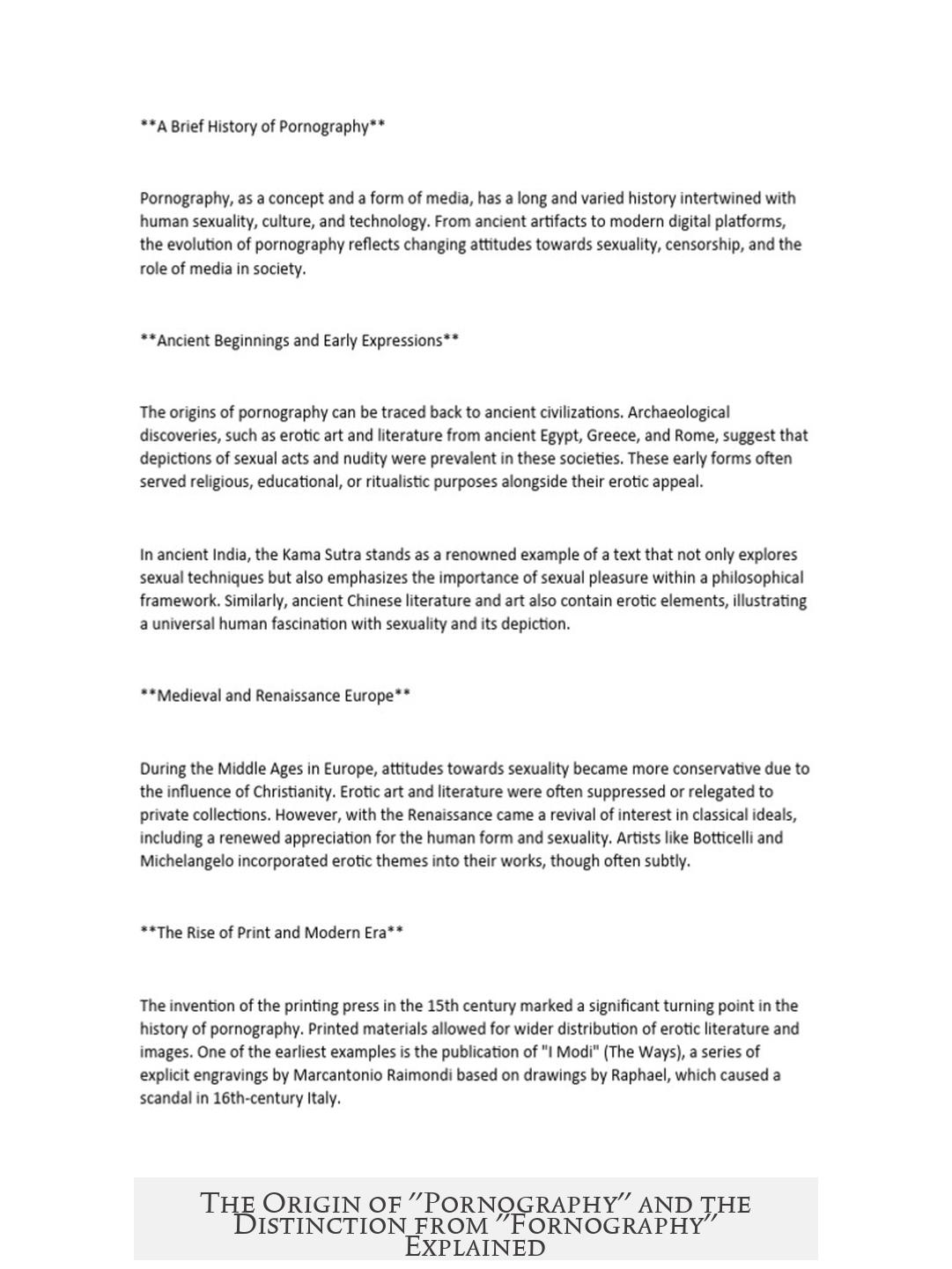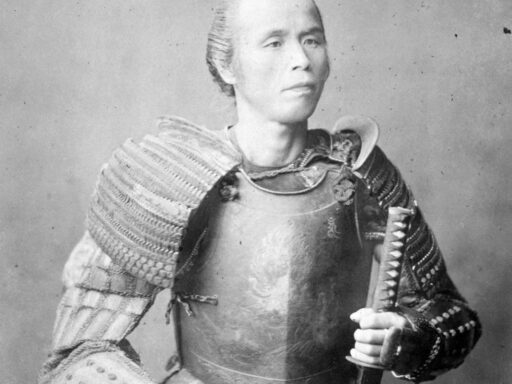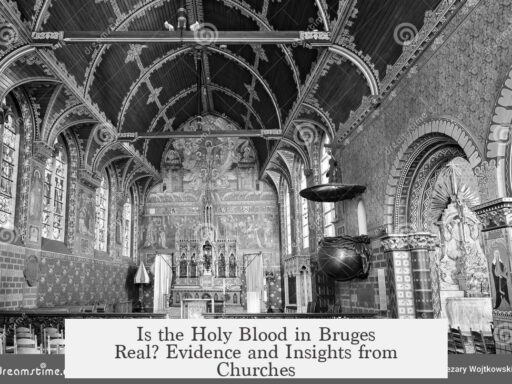The origin of the word pornography lies in Greek, derived from the term πόρνη (pórnē), meaning prostitute, combined with -γραφία (-graphia), meaning writing or representation. It first entered English through French as “pornographie,” implying a treatise or depiction of prostitution. It is not called fornography because “fornicate” has a separate Latin root relating to brothels metaphorically called “fornices” (vaults or arches), and the terms evolved differently in language and usage.
Pornography comes from the Greek root πόρνη (pórnē), specifically referring to prostitutes. The prefix “porno-” acts as a combining form attached to words describing writing, art, or media related to prostitutes or sexual acts. The Greek root stems from πόρνη, linked to πόρναι, which not only means prostitute but also ties to trading or selling, reflecting the commercial aspect of prostitution. The suffix -γραφία (-graphia) means “writing” or “description.” Thus, “pornography” literally means writings or depictions about prostitutes or sexual matters.
The word emerged in English in the 19th century through French influence. The French word “pornographie” originally meant treatise on prostitution around 1800. By 1842, it expanded to encompass obscene paintings, descriptions, and publications. The Oxford English Dictionary cites 1842 as the first recorded English use of pornography in this context.
On the other hand, the word “fornicate” derives from the Latin “fornicātus,” linked to “fornix,” meaning “vault” or “arch.” Roman brothels were often located under arches or vaults, which led to a metaphorical meaning associating the architecture (fornix) with the act of illicit sex. Fornication historically entered English much earlier, with documented use from the 16th century. Its Latin root focuses more on describing the act of sexual intercourse, especially illicit sex, rather than explicit representation or depiction as pornography does.
In essence, pornography as a term focuses on portrayal or representation of sexual content, rooted in Greek lexical history connected to prostitution’s commercial side. Fornicate speaks more to the act itself, using Latin metaphors tied to building structures. Although the two words sound similar, their etymologies, usages, and semantic fields differ significantly. This difference explains why the descriptive media of sexual content is called pornography and not fornography.
| Aspect | Pornography | Fornicate/Fornography? |
|---|---|---|
| Language Root | Greek (πόρνη) | Latin (fornix) |
| Meaning Base | Prostitute, commercial sexual depiction | Brothel arch, illicit sex act |
| Term Focus | Depiction, media, writing of sexual acts | Sexual act itself |
| English Entry | Mid-19th century | Mid-16th century |
- Pornography originates from Greek terms for prostitute plus writing/depiction.
- “Fornicate” comes from Latin metaphors linked to brothels under arches.
- The words cover different meanings: depiction versus act.
- Different origins explain why pornography is not called fornography.
What is the origin of the word pornography? Why is it not called fornography?

Simply put, the word pornography comes from ancient Greek roots related to prostitution and slave trade, while fornography never took off because its Latin roots and metaphorical meanings differ significantly. So, yes, it’s all about history, language quirks, and cultural evolution. Curious about the details? Let’s dive deeper.
First, let’s unpack the origin of pornography. The term is built from the Greek root porno-, which stems from the word πόρνη (pórnē). This means prostitute, marking quite literally what the word is about. But wait, there’s more. This isn’t just a fancy name for sex stuff; it has historical and economic baggage.
The Greek root also ties to an ancient verb, περνάναι, which means “to sell” or “export for sale.” The word πόρνη is an ablaut variant of this verb’s base. Consequently, prostitutes were often sold as slaves—which, let’s be honest, is a grim reminder of the times. The suffix -νη forms nouns, so πόρνη literally labeled those women sold and enslaved for prostitution. Not a term emerging lightly, right?
Fast forward to more recent history, pornography enters English from French pornographie, initially meaning “a treatise on prostitution” around the 1800s. By 1842, English literature already uses it to describe obscene art and writings, according to the Oxford English Dictionary. So, back then, “pornography” was less about internet videos and more about “obscene depictions” focused on prostitution.
Now, why not “fornography”?
This is where it gets fascinating. The word fornicate comes from Latin rather than Greek. The Latin root is fornix, meaning an arch or vault. In Ancient Rome, these arches were often physical brothels. Somehow, the vault got associated with the sexual act metaphorically. The Romans loved metaphors for sexuality: a “vault” could stand-in for the female genitalia, just as “bay” or “water inlet” might be used.
So, when you hear fornicate, it doesn’t just mean to have sex casually; it carries figurative imagery tied to places where such acts were commercial or frowned upon. The word’s earliest English usage dates back to 1552, way before “pornography” entered the language. This means the concept of casual extramarital sex has long had a different root and word.
But crucially, “fornography” never caught on as a term. It’s a bit like trying to call pizza “cheesetreaty” instead of “pizza”: even though the parts sound logical, usage decides what sticks. The root fornix carries a metaphorical context that didn’t translate into describing obscene media as “pornography” does.
The Greek root was more straightforward and tied directly to the idea of prostitution and depictions thereof, which fit the emerging term for obscene visuals and texts. Latin’s metaphorical twist on “arch” was less direct and less suitable for a category name of explicit art or media.
What does this tell us?
- The origin of pornography is deeply connected to the economic and social realities of prostitution in ancient Greece.
- Fornicate and its root fornix stem from Roman imagery of brothels as arches, but this connection remained metaphorical and didn’t evolve into a term for explicit content.
- Language evolution favors clarity and cultural resonance; “pornography” better encapsulated the meaning needed for depictions of explicit material.
Interestingly, modern English forged these terms from two different ancient worlds—Greek’s blunt business-like portrayal versus Latin’s euphemistic metaphors.
Why does this historical linguistic distinction matter?
Beyond trivia, understanding the roots of “pornography” unveils how language shapes perceptions. Pornography’s literal meaning— “writing about prostitutes”—carries a historical stigmatization deeply linked to commerce and morality. This influences how society reacts to explicit content even today.
On the flip side, “fornication” holds an older connotation with moral judgment—acts outside marriage, often secretive or sinful. But it never came to denote the content type (images, writings), just the act itself.
A practical example?
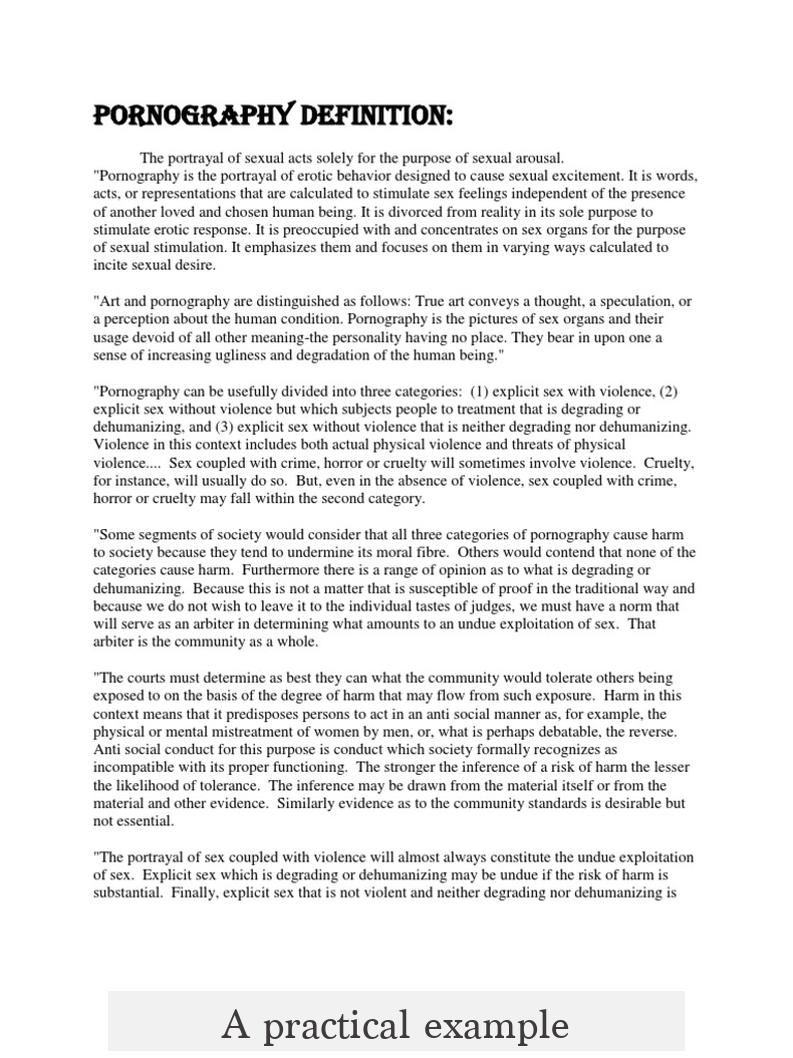
Imagine asking a linguist, “Why didn’t we call explicit content ‘fornography’ instead?” They might smile and explain it’s a case of cultural nuance influencing language. The Greek root’s directness lends itself better to categorizing art focused on sex workers and sexual acts, aligning with early depictions. Latin’s indirect metaphor wouldn’t have conveyed the clear meaning needed.
Today, the term “pornography” dominates globally, encompassing all explicit visual or written content aiming to arouse. It’s a product of history and language blending—Greek clarity meets modern culture.
Wrapping up
The word “pornography” isn’t just a fancy label. It grounds back to ancient Greece, where words linked sex to commerce and social roles. “Fornography” doesn’t exist because Latin’s more indirect, metaphor-heavy roots don’t lend themselves well to naming obscene content. This language tale helps us understand how a word’s origins color our modern meanings and judgments.
Next time you hear the word pornography, remember: it’s carrying an ancient economic and moral story. Meanwhile, “fornography” remains a playful linguistic dead-end—a neat “what if” from language history that didn’t quite make the cut.
So, curious reader, how often do you think about the words we use every day and their hidden pasts? Language isn’t just a tool—it’s a storybook of human culture, and sometimes, those stories are shockingly vivid!
